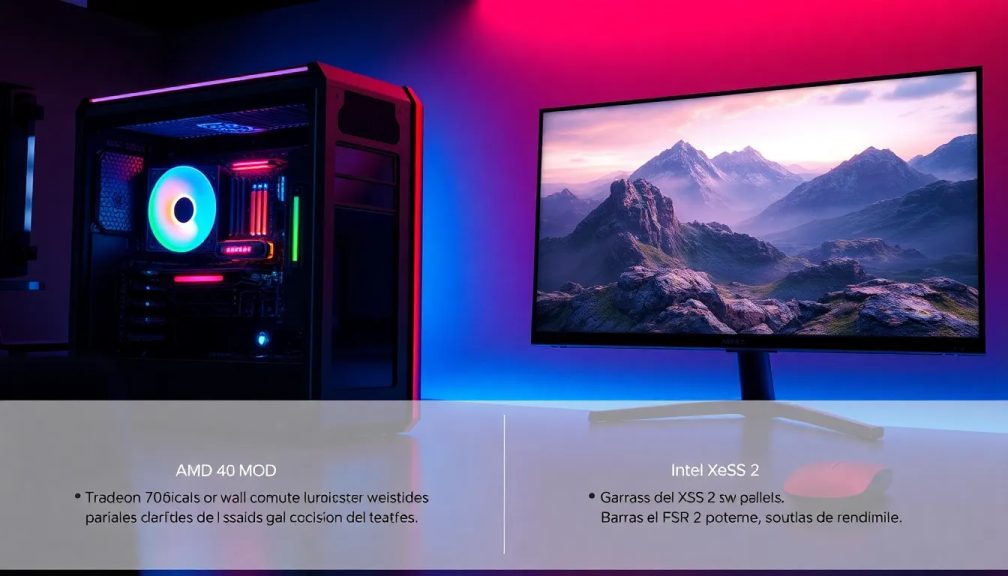FSR 4 Mod on AMD Radeon 7800 XT Outperforms Intel XeSS 2 Image Quality

In the rapidly evolving landscape of graphics technology, AMD’s FidelityFX Super Resolution (FSR) 4 is making headlines with its impressive capabilities, particularly when compared to Intel's Xe Super Sampling (XeSS) 2. This article delves into the intricate details of FSR 4's performance, image quality, and how it stands against its competitors, providing you with a comprehensive overview of this cutting-edge technology.
As gamers and tech enthusiasts alike seek to enhance their visual gaming experiences, the ongoing developments in upscaling technologies have taken center stage. AMD's FSR 4 promises not only a boost in frame rates but also an exceptional improvement in image fidelity, challenging established norms in the industry. Let's explore the implications of these advancements in detail.
Understanding AMD's FSR 4
FidelityFX Super Resolution (FSR) 4 represents a significant leap forward in AMD's upscaling technology. Unlike its predecessor, FSR 3.1, this new version focuses on delivering enhanced image quality while maintaining performance, a critical factor for gamers who prioritize smooth gameplay.
- Improved Detail Retention: FSR 4 excels in retaining small details in textures and environments, which enhances the overall immersion.
- Performance Efficiency: Despite its improved quality, FSR 4 manages to minimize performance drops, making it suitable for a wider range of hardware.
- Compatibility: The recent release of FSR 4's source code allows for implementation on various GPUs, including those that were previously unsupported.
FSR 4 vs. Intel XeSS 2: A Comparative Analysis
The rivalry between AMD's FSR 4 and Intel's XeSS 2 is heating up as both technologies vie for supremacy in the realm of image upscaling. NJ Tech has conducted extensive testing, revealing key differences in performance and image quality between the two.
In their assessments, it was noted that while Intel’s XeSS 2 offers a more stable image, it falls short in terms of detail retention when compared to FSR 4. This is particularly evident in complex scenes where finer details are crucial for immersive gameplay.
Performance Metrics
During benchmark tests in popular titles, the following observations were made:
- Cyberpunk 2077: At 1440p Ultra preset without ray tracing, FSR 4 delivered around 90 fps, occasionally trailing XeSS 2 by just 1 to 2 fps, hardly noticeable during gameplay.
- Horizon Forbidden West: Both technologies showcased similar performance levels, but FSR 4's image quality was notably superior, especially in grass and character hair rendering.
- The Last of Us Part II Remastered: Again, FSR 4 outshone XeSS 2, providing more stable and visually appealing textures.
Specific Game Performance
While both technologies showed commendable performance in various titles, FSR 4 was particularly effective in:
- Cyberpunk 2077: Maintaining detail in foliage and urban environments.
- Horizon Forbidden West: Enhancing the realism of landscapes and character animations.
- The Last of Us Part II Remastered: Showcasing improved clarity in character models and environmental textures.
Technical Advancements and Community Modifications
The release of FSR 4's source code has ignited a wave of community-driven enhancements, allowing users to apply this technology on various GPUs beyond those officially supported. This democratization of technology is significant, as it enables more gamers to experience the benefits of FSR 4, regardless of their hardware.
Modifications have led to:
- Enhanced Compatibility: Users have successfully implemented FSR 4 on older models, expanding its reach.
- Community Support: Enthusiasts and developers are creating guides and tools to facilitate the installation and optimization of FSR 4.
Image Quality: The Key Difference
When analyzing the image quality, FSR 4 stands out for its ability to deliver sharper visuals and better overall texture fidelity. This becomes particularly apparent in detailed scenes, where FSR 4 retains more intricate details compared to XeSS 2.
Key factors contributing to FSR 4's superior image quality include:
- Detail Preservation: FSR 4 excels in maintaining fine details in textures, enhancing the realism of the gaming experience.
- Stability of Visuals: Users have reported a more stable image, especially in motion, which is crucial for fast-paced gaming.
- Adaptability Across Settings: Various quality settings (Quality, Balance, Performance) allow users to tailor the experience according to their hardware capabilities.
The Future of Upscaling Technologies
The advancements in FSR 4 and its competition with XeSS 2 highlight a critical evolution in gaming technology. As both AMD and Intel continue to refine their offerings, gamers can expect even more sophisticated upscaling solutions that enhance not just performance, but the overall visual experience.
For those interested in a visual comparison, check out this insightful video that showcases the differences between FSR 4 and XeSS 2 in action:
Final Thoughts on FSR 4 and Gaming Choices
In conclusion, the choice between FSR 4 and XeSS 2 ultimately hinges on individual preferences. For gamers seeking visual fidelity, FSR 4 emerges as a compelling option, while those who prioritize frame rates might lean towards XeSS 2. As technology continues to evolve, staying informed about these advancements will empower gamers to make the best choices for their setups.




Leave a Reply